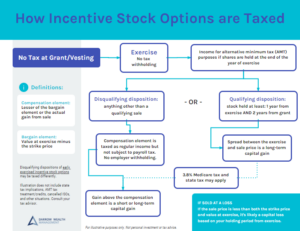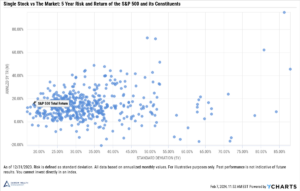How much charitable giving will reduce taxes depends on what you donate. The tax deductions for charitable giving will vary for donations of cash, stock, or even retirement assets. To maximize the tax benefits of charitable giving, consider the different ways you could give. To find the best tax savings, you’ll need to calculate how much charitable donations will reduce taxes for the different assets you could give.
Which Charitable Giving Strategies Offer the Best Tax Benefits?
How much will charitable giving reduce taxes? For those who are charitably inclined, changes to the tax code require a reevaluation of planned giving. A near-doubling of the standard deduction and other changes make it harder for many taxpayers to benefit from donations of cash or goods to charity.
Luckily, there are other charitable giving strategies to consider which could offer multiple tax benefits, such as donating appreciated securities or cash directly from an IRA. Choosing the right vehicle for your charitable donation is key to getting the biggest tax deduction.
Depending on your financial situation and planned giving objectives, there may be a few different ways to reach your goals.
Three common ways to donate to charity have different tax benefits:
- Giving cash
- Donating appreciated securities
- Taking a qualified charitable distribution from an IRA
Note: more advanced planned giving techniques, such as setting up a private foundation or a charitable lead/remainder trust are outside the scope of this article. To discuss your personal situation, we suggest you contact your financial advisor and estate planning attorney.
Tax deductions for donating cash
Giving cash or non-cash goods may be top-of-mind, but cash isn’t necessarily the most effective way to donate – for either the charity or the donor. Cash gifts to charity appear on schedule A of the tax return, which is where itemized deductions are listed. So if a taxpayer doesn’t itemize their deductions, they won’t receive a tax deduction their donation.
The new tax code (which took effect in 2018), effectively doubled the standard deduction and spurred other changes and limitations to itemized deductions. The result: only about 12% of households are projected to itemize their deductions in 2018, down from 31% in 2017 (source: Tax Foundation).
In 2024, the standard deduction is $14,600 for single filers and $29,200 for married couples under age 65, filing jointly. Using a 50-year-old married couple as an example, the pair needs itemized deductions greater than $29,200 in 2024 or they would be better off claiming the standard deduction.
The most common itemized deductions include:
- Mortgage interest. Generally for mortgages before 2018, interest may be deducted on loans up to $1,000,000. For loans after 2017, the loan amount is reduced to $750,000. Interest on HELOCs may no longer be deductible unless certain conditions are met
- State and local taxes (SALT). Deductions for all state income tax, property tax, sales tax, and local taxes are capped at $10,000
- Qualified medical expenses. Medical expenses in excess of 10% of adjusted gross income (AGI) can qualify as an itemized deduction
- Charitable giving. Cash donations to qualified public charities are limited to 60% of AGI. Donations of appreciated securities is limited to 30% of AGI. Any unused deduction can be carried forward for 5 years.
As a result of these changes, you may want to consider a new strategy to maximize the tax benefits from your generosity.
Reducing taxes by ‘bunching’ cash donations to charity
A strategy called ‘bunching’ can help ensure some donors don’t miss out on a meaningful tax deduction for their charitable endeavors. Bunching, or clumping, donations would mean instead of making annual cash gifts to charity, a taxpayer would group two or more years together, for less frequent but larger gifts. In gift-years, the donor would itemize their deductions, and in other years, claim the standard deduction.
Here’s a simplified example of bunching charitable contributions under the regular rules in 2024
A couple, age 50, live in a state without income taxes. Their property taxes are $5,000 per year and they have $10,000 in home mortgage interest. They also donate $10,000 annually to their favorite public charity. Their itemizable deductions are $25,000, which is less than the standard deduction. If the couple ‘bunched’ their charitable deduction instead, making two years of gifts in one year, they could take $35,000 of itemized deductions in the current tax year. The next year, they would opt for the standard deduction.
Donating appreciated securities instead of cash can be a very efficient way to maximize the support for your chosen charity and your financial benefit from the donation, if you can itemize your deductions. Since the securities are donated directly to the public charity, the taxpayer does not incur long-term capital gains taxes as they would if the security was sold to raise cash for the donation.
Work with your financial advisor and CPA to identify whether any securities in your portfolio may be candidates for this strategy and to understand the potential tax impacts.
Infographic: How Much Charitable Donations Will Reduce Taxes
Reducing taxes by donating appreciated securities to charity
Giving appreciated stocks, bonds, or mutual/index funds, can also be a way to maximize your gift to charity and your financial benefit. Unlike cash donations, (which are made with after-tax dollars and may reduce your income tax liability if you itemize your deductions), when you give an appreciated stock, you avoid incurring the capital gains taxes that would otherwise have been incurred if the security was sold to raise cash for the donation.
In addition, if you itemize deductions, you may also take a charitable deduction for the fair market value of the asset when it was donated, up to of 30% of your AGI. As with cash donations, there is a five-year carry forward for unused deductions. Therefore, the bunching strategy (discussed above), should also be considered when donating appreciated securities. Keep in mind, only long-term securities are eligible, so positions must be held for more than one year to qualify.
The benefits of this strategy really depend on how much the asset has appreciated relative to your cost basis. Without meaningful capital gains savings, this method looks rather similar to cash donations. For positions with losses, it’s better to sell the security and realize the loss to offset other gains. Then, consider donating cash. Publicly traded and private securities can be donated, the latter requiring an independent valuation, which increases the cost of giving.
This article has more on donor-advised funds.
Gifting your required minimum distribution to charity
What many retirees don’t know is that they can donate all, or a portion of, their required minimum distribution (RMD) directly to charity. It’s called a qualified charitable distribution or QCD. Charitable distributions directly from an IRA can also be made before RMDs begin. The Secure Act raised the RMD age for some taxpayers but didn’t change the age when QCDs could be made, 70 1/2. In 2024, the QCD limit increased to $105,000 per taxpayer.
Qualified charitable distributions reduce your taxable income
As discussed, a QCD can be a very financially-effective way to support a cause. However, as with any financial and tax strategy, it’s important to first understand the details and limitations. It’s very important to note that a qualified charitable distribution does not provide a charitable deduction for taxpayers – regardless of whether the individual itemizes their deductions.
Instead, a disbursement directly to charity enables the donor to exclude the sum from their taxable income. The benefits (as explained in the four reasons above), can cascade into other areas of their financial situation. Getting around the hurdle to itemize tax deductions to reap tax savings is advantageous especially when the taxpayer is over age 65.
QCDs are perhaps best utilized when an individual does need the income from their entire required minimum distribution. The IRS will first satisfy the RMD with any withdrawals throughout the year. So it’s important to plan ahead, especially if taking monthly distributions.
Learn more about qualified charitable distributions.
Which reduces tax more? Donating appreciated stock vs giving an RMD
Unfortunately, the answer will really be specific to each individual’s financial and tax situation. Factors such as marginal tax bracket, ability to itemize deductions, and even legacy goals can influence the advice.
For retirees looking to leave an inheritance to a spouse or family members, it may be better to pursue a qualified charitable distribution, as appreciated assets in a taxable brokerage account will receive a favorable ‘step-up’ in basis to the fair market value of the security at the date of death.
Although the timing and amount of RMDs will likely change, assets inherited in an IRA will receive the same tax treatment when passed to a spouse, child, or relative, though non-spouse beneficiaries can no longer ‘stretch’ the distributions over their lifetime by taking required minimum distributions.
Starting in 2020, beneficiaries who inherit a retirement account from a non-spouse (e.g. a parent or relative) will be forced to take the funds in 10 years. Again, given the step-up in cost basis and no RMDs, brokerage accounts are popular in legacy planning.
Final note on advanced giving strategies
How much charitable donations will reduce taxes will depend on you tax situation and the asset you give. For those who are charitably inclined with substantial resources, there are likely a wealth of strategies available. Before diving into the complex giving realm of charitable trusts and private foundations, try to prioritize your goals.
While advanced giving techniques can be valuable, the administrative costs (measured in time and dollars) must be weighed. This is particularly true for some private foundations, which essentially operate with the same needs as a business.











